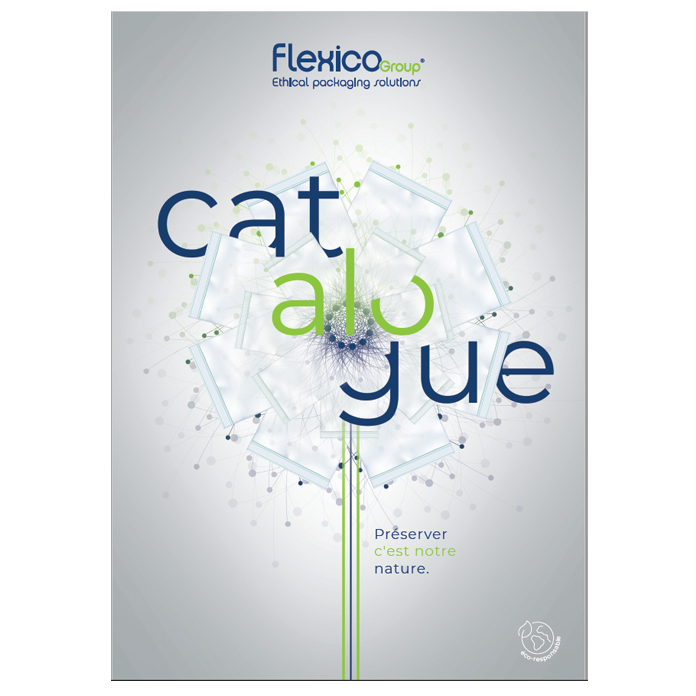
A flavor is a volatile compound that allows the perception of the taste and smell of a product. The preservation of aromas depends directly on the quality of the packaging used. The contact with the ambient air being the first responsible of the aromatic loss of a food or an ingredient, it is the barrier brought by the packaging which allows to preserve the organoleptic properties.
In this article, discover how to optimize the choice of packaging film and closure system to ensure the preservation of flavors.
1) Choose the most suitable material!
The preservation of flavors requires the use of a package with the appropriate “barrier” properties.
The use of a barrier film allows to protect a food against external aggressions (oxygen, humidity…), to maintain the protective atmosphere of a packaging before the first opening, to preserve the flavours inside the sachet, to confine a malodorous product (petfood…) or to protect the contents from light.
Two types of barriers are commonly sought: the oxygen barrier and the water vapor barrier. They are characterized by the quantity of gas passing through the film under defined temperature and hygrometry conditions.
The most effective barrier is provided by a layer of aluminum, followed by mineral coatings of aluminum oxide or silicon (AlOx or SiOx) which remain transparent, films co-extruded with a layer of EVOH, also transparent, opaque metallized films, PA which is very effective for vacuum packaging, and PET (polyethylene terephthalate). Single-material PE or PP films offer a satisfactory water vapor barrier but a poor oxygen barrier.
Laminating different materials remains the most efficient way to economically design a package to preserve flavors, but it must be used wisely, as the current state of technology does not allow for recycling of complex films.
Sometimes a valve is used to ensure that the gases released by the product are evacuated. For example, 1 kg of freshly roasted coffee produces up to 6 liters of gas, which prohibits its hermetic packaging immediately after roasting. Intermediate storage was required before packaging, causing additional costs and depletion of flavors. The valve has allowed a hermetic packaging preserving the coffee from external aggressions, while letting it breathe.
The introduction of oxygen is prevented by the barrier film and the one-way valve.
Minimizing the amount of air in contact with the product is the best solution to preserve its aromas. The flexible packaging (bag or pouch) decreases in volume as it empties, to contain only the product and a minimal amount of air. A rigid packaging (box or can), on the contrary, replaces the volume of product emptied by air, which can alter the taste qualities of the remaining product, and accelerate its aging process. This explains the growing popularity of “Bag in Box” bags for wine packaging. These bags already package 40% of the wine sold in France, and this figure is constantly increasing, even for quality wines.
2) Optimize the locking system
Packaged in an airtight package with the necessary barrier properties, the degradation kinetics of the product are slowed down, even more so if it has been packaged under vacuum or under modified atmosphere (nitrogen and/or carbon dioxide), which allows a considerable increase of its shelf life (2) or its DDM (3), formerly called DLUO (4).
The closure system of a plastic bag has a direct impact on the shelf life of the flavors because it influences the hermeticity of the package and minimizes the exposure of the food to the outside atmosphere.
The different bag closing systems available are: sealing, folding associated with a sticker, wire ties, drawstrings, repositionable adhesive, single or multi-track zipper with or without slider, cap…
When it is a single-use product, such as an individual packet of chips, snacks, or a pre-dosed preparation, it will be consumed in its entirety after opening. In this case, a simple seal is sufficient to seal the package and give it its hermetic character until opening.
For portionable products, which will be used in several times over a variable period of time, the choice of closure will be guided by its convenience, the number of openings/closures, the consumption time after the first opening and the sensitivity of the product to the atmosphere. A 250 gram pack of pasta will be consumed in one to four times, and sometimes over a few weeks, but since the product keeps for a long time without deteriorating, a simple folding closure assisted by a sticker is sufficient. Grated cheese, which is sensitive to oxygen, is best kept in a zip-lock bag, as is coffee, whose aroma will be preserved for several weeks.
Developing a packaging that aims to preserve the flavors of a product is not only a commercial asset, but it is also a societal choice by participating in the fight against food waste. Indeed, a product that loses its flavors too quickly is more likely to be thrown away after a few days due to lack of taste even if it is still edible. For 54% of French people, reducing food waste is a very important action to take every day (1).
If the preservation of flavors is a real issue for you, find our custom packaging solutions, or contact us directly! To go further, discover the Packaging Guide on the theme of the Sacherie.




